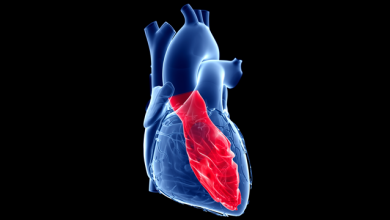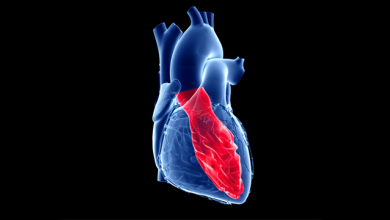Search results
Author(s):
Antoni Bayés-Genís
,
Christian Muñoz-Guijosa
,
Evelyn Santiago-Vacas
,
et al
Added:
3 years ago
“The time is always right to do what is right.”
– Martin Luther King Jr (1929–1968)
Heart failure (HF) has increased at a fast pace during the 21st century to become the main cause of morbidity and mortality for patients with cardiovascular disorders in developed nations, leading to increasing healthcare costs and declining quality of life. The expected prevalence of HF was ~25 million in 2011,…
View more
Author(s):
Patrycja Ganslmeier
,
Christof Schmid
Added:
3 years ago
End-stage heart failure is a leading cause of death of modern society. In the US almost five million people suffer from heart failure, with an annual incidence of 500,000 new cases. About 10% of the population beyond 70 years of age are affected (www.nhlbi.nih.gov). Estimations for Europe amount to 10 million and heart failure has overtaken cancer as the leading cause of death (www.destatis.de)…
View more
Author(s):
Antoni Bayés-Genís
Added:
3 years ago
“Science can amuse and fascinate us all, but it is engineering that changes the world.”
– Isaac Asimov, 1920–1992
Technological breakthroughs, particularly advances in devices, are changing the course of heart failure (HF) management. Implantable devices have been used for decades to treat heart disease. The first pacemaker was implanted over 60 years ago (October 1958), and implantable…
View more
Author(s):
Dominik Wiedemann
,
Thomas Haberl
,
Julia Riebandt
,
et al
Added:
3 years ago
History of Mechanical Circulatory Support
The first reported clinical use of a left ventricular assist device (LVAD) was by Liotta and Crawford in 1963. Via a left thoracotomy, an intracorporeal pneumatically driven pump was implanted using left atrial inflow and descending thoracic aortic outflow. Despite the successful implantation, the patient died within a short period of time after the…
View more
Author(s):
Kiran K Khush
,
Sharon A Hunt
Added:
3 years ago
The field of heart transplantation has evolved tremendously since Alexis Carrel first explanted a canine heart and anastomosed it to the carotid artery and jugular vein of a recipient dog in 1905.1 In 1960, Norman Shumway and Richard Lower at Stanford described a technique for orthotopic canine heart transplantation and demonstrated adequate physiologic function of the denervated heart.2 Their…
View more
Author(s):
Christopher S Hayward
,
Marc Swartz
Added:
3 years ago
Heart failure is an escalating global pandemic and one of the leading causes of death and disability in the developed world. At present, the incidence of heart failure in the Western world is staggering, affecting approximately 6.5 million people in Europe and 5.8 million people in the US.1–3 Even more alarming is the notion that approximately 10 % of this population suffers from advanced heart…
View more
Author(s):
Leonardo Guimaraes
,
David del Val
,
Sebastien Bergeron
,
et al
Added:
3 years ago
Major advances in heart failure (HF) management have been achieved over the past three decades, yet it remains a syndrome with high morbidity and mortality, poor quality of life and high healthcare costs. Despite all advances in medical/device therapy, many HF patients continue to deteriorate, leading to poor quality of life and high rehospitalisation and mortality rates.1 The recent European…
View more
Author(s):
Dennis V Cokkinos
,
Christos Belogianneas
Added:
3 years ago
The term cardiac remodelling (REM) is used to define changes that produce geometrical rearrangement of the normal structures of the heart, together with complex biological and molecular alterations. REM affects the heart at the level of the cardiomyocyte, the blood vessels and the extracellular matrix. Proliferation of the latter, resulting in fibrosis, is one of the hallmarks of pathological REM…
View more
Author(s):
Felipe Martínez
,
Eduardo Perna
,
Sergio V Perrone
,
et al
Added:
3 years ago
Chagas disease was initially described as an endemic health problem in a few countries in South America – mainly Argentina and Brazil – and one of the consequences of the disease, heart damage, made it an interesting issue for healthcare professionals, from epidemiologists to cardiologists.1 Chagas cardiomyopathy (ChCM) is now recognised as a cardiovascular disorder, diagnosed and treated not…
View more
Author(s):
Charlotte Eitel
,
Gerhard Hindricks
,
Christopher Piorkowski
Added:
3 years ago
Cardiac resynchronisation therapy (CRT) is an established therapy for patients with drug-refractory, highly symptomatic systolic heart failure (HF) and delayed ventricular conduction.1 CRT devices are designed to synchronise the mechanical activity within the left ventricle, between the left and the right ventricle and between the atria and ventricles. Resynchronisation induces reverse…
View more













